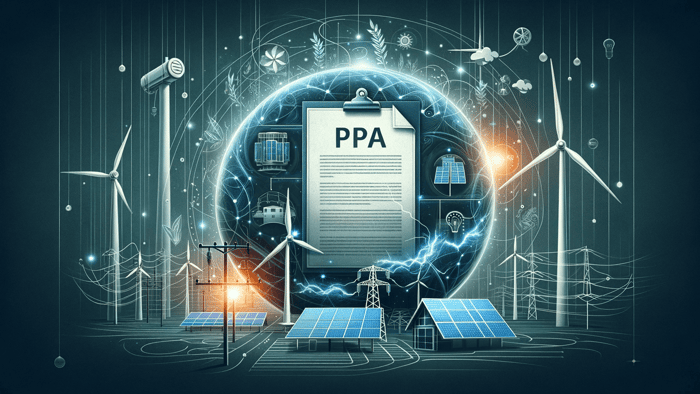How to value a wind farm or solar plant - is the fair valuation simply the price paid for the asset, or do investors view the value of a renewable energy asset differently?
When approaching 100 different potential investors for a large-scale renewables investment, the seller of the asset will likely receive 100 different pricing offers. The reason for such a diverse valuation of the same asset is that most investors use a discounted cash flow (DCF) approach to determine the fair value of an investment. So how to value a wind farm or solar plant properly?
DCF analysis is a valuation methodology that helps to determine the fair value of an investment today by discounting all future cash flows a project will generate using a required rate of return, also referred to as the internal rate of return (IRR) of the project.
DCF analysis at a glance
- Discounted cash flow analysis supports determining a fair value of an investment based on its future cash flows.
- Future cash flows are discounted at an investor's required rate of return to arrive at the present value.
- From a project developer's perspective, it only makes sense to realize the project if the fair value - according to DCF - exceeds the project's cost.
- Using leverage (debt) can help increase an asset's enterprise value, assuming that the equity IRR requirements increase at a slower rate than the extra cost of additional debt.
- A significant uncertainty using this valuation approach is the unpredictability of precise future cash flows.
Capital structure - a significant value driver for renewable energy investments
The capital structure is one of the most important value drivers.
- Lower tax payments: The use of debt financing increases interest costs which are deductible within the income statement and ultimately lead to lower earnings before tax (EBT) which lowers the overall tax bill for the asset.
- Use of shareholder loans: Sophisticated investors use shareholder loans within their capital structure. Essentially, a shareholder loan (SHL) is a loan given by an equity investor to the project's special purpose vehicle (SPV). Since the loan is subordinate to the debt loan from a bank, the shareholder loan interest is often even much higher, ultimately leading to even higher tax savings. The maximum SHL interest rate and gearing are often limited by fiscal authorities depending on different jurisdictions - a tax advisor should always be consulted when implementing such structures.
- Increase of equity IRR through leverage: Typically, the cost of debt financing is much cheaper than the cost of equity. Therefore, if a project can take on a significant portion of the debt, this increase in leverage - also referred to as gearing - can increase the equity IRR significantly. Institutional investors often require a minimum rate of return which implies that if the overall equity IRR can be increased using debt, the asset's enterprise value can be improved until the equity IRR is back to its minimum rate of return.
Below is the valuation dashboard used in our Advanced Renewable Energy Financial Modeling course. This online video course teaches you how to build a financial model with advanced capital structures from scratch.

What other fundamental value drivers are of importance?
- Source of revenue: The projected revenues highly depend on future cashflows. Such cashflows can typically come from merchant revenue, bilaterally concluded power purchase agreements ("PPAs"), or state-subsidized feed-in tariffs ("FiTs").
- Energy yield: Renewable energy plants produce electricity - technically referred to as kWh. This electricity is sold to create a source of revenue, so it is essential to know how much electricity the project will generate. Equity investors typically consider a P50 value, while debt investors consider more conservative production assumptions such as the P75 or P90 value.
- Bankability: The bankability of a project depends on many different factors. However, the source of revenue is a significant driver of how much debt the bank is willing to give out. The more revenues are contractually fixed, the more de-risked the project will be, ultimately leading to more willingness by banks to give out debt. If a fixed price PPA is concluded, it is also of importance whether it has a pay-as-produced or baseload structure underlying.
- Operational expenditures: Renewable energy assets have several different operational expenditures such as O&M, land lease, commercial & technical management, insurance, and route-to-market costs, which all reduce the future cashflows in the DCF model.
- Inflation: In the long term, inflation will affect both - revenue streams and operational expenditures.
How to properly determine the value of an asset in a financial model for renewable energy investments?
Do you want to learn how sophisticated investors value their investments using a financial model created explicitly for renewable energy investments? Then check out the Advanced Renewable Energy Financial Modeling course.





